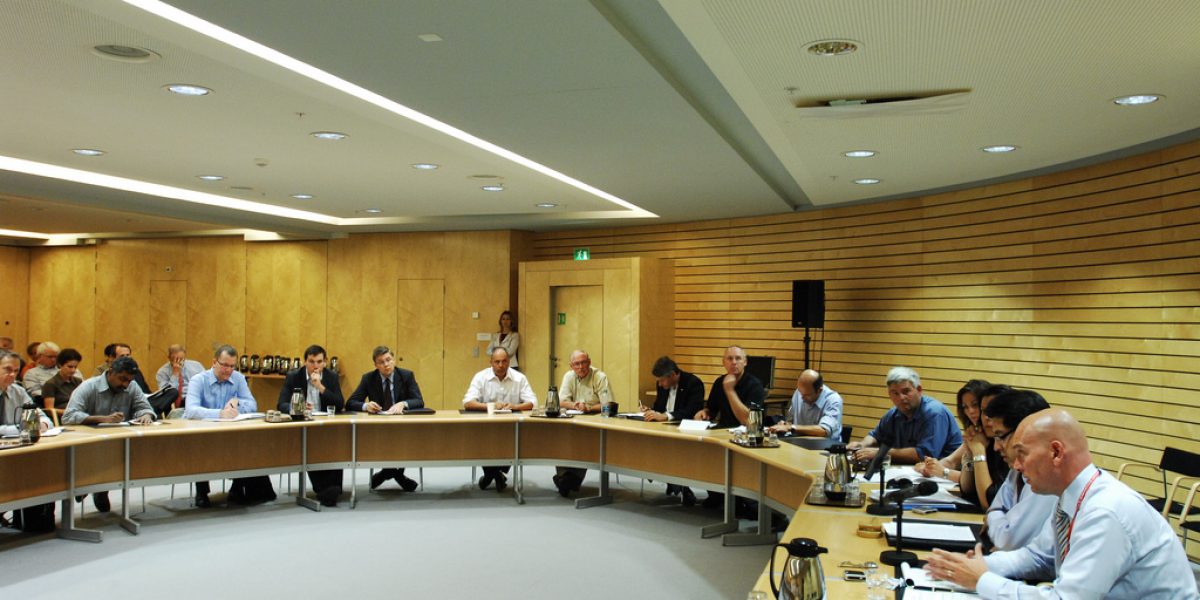Many commentators, including me, were fearful that the Democrat takeover of the US Congress would lead to a reversal in US trade politics in the sense that labour rights and the environment would move higher up their agenda, but would be resisted in the World Trade Organisation (WTO), thereby spelling doom for the round (and possibly the WTO itself).
These issues have moved up the congressional agenda, but will probably not intrude into this round. Rather, they have found expression in the US’s bilateral free trade agreement (FTA) agenda, notably with respect to the Peru and Panama FTAs – the subject of a recent bipartisan deal (a rare commodity) in the US Congress.
Next Congress must decide on extending President George Bush’s trade promotion authority (TPA), which expire at the end of last month, and concluding a new Farm Bill by the end of September.
The hot money in Washington has it that the TPA will be extended by six months, thereby providing a narrow window to conclude the round by the end of this year. In return Democrats will seek substantial amendments to trade adjustment assistance legislation, due by the end of September, whereby “losers” from trade liberalisation and globalisation (how they are identified is a mystery ) receive training grants.
The significance of these developments should not be underestimated. But much depends on the Farm Bill. Recent analyses indicate that old established field crop interests (in decreasing pork barrel order: corn, cotton, wheat, rice, soya beans) have reasserted themselves, and have been joined by newer interests (fruit and vegetables) and the biofuels lobby.
To keep the round on track US subsidies will need to be capped at around $15bn (currently $19,1bn) – more than current payments but below the current cap, and will have to be substantially delinked from production. Dynamics in the Farm Bill process suggest that both conditions may be violated; hence the Farm Bill remains the Doha Round’s Achilles heel.
Meanwhile, French President Nicolas Sarkozy has received an unprecedented reform mandate. Unfortunately, agricultural trade reforms are not (overtly) on his agenda. His new agriculture minister, Christine Lagarde (previously trade minister), will strenuously resist further agricultural reforms, notably tariff liberalisation, in the absence of a substantial Doha industrial tariff liberalisation package.
Unofficially the commission has indicated it can move to the G20’s (of which SA is a member) position of a 54% average tariff cut; the key question is how many “sensitive products” it will be able to exempt. The secretive “G4 Directorate” (US, EU, India, Brazil) conducting this phase of negotiations seems to be converging on a figure of 4% of tariff lines.
So Brazil and India will have to offer substantial industrial tariff liberalisation. This will be governed by a developing country coefficient applied to the tariff regime in a formula cut (a lower coefficient implying higher cuts) which will also cap the tariff ceiling at the same level as the coefficient. My guess is the final number will be between 20 and 25.
Brazil’s payoff is in the agricultural package. India will get more H1-b visas for its IT workers to temporarily work in Silicon Valley (the current quota of 50 000 is used up in one day) but will have to reduce its current ridiculous demand to exempt 20% of its agricultural tariffs (“special products”) from liberalisation.
All this will have to come together this month, before the northern hemisphere holiday season begins , key congressional dates elapse and the US election cycle resumes. The next stage will be to cajole the WTO membership into the “contract zone”.
This will be complicated, especially for SA. Organised business (import-competing manufacturing), and labour (Cosatu) are anxious. Bound tariffs (ceilings) will be cut but, owing to our failure to enact unilateral tariff reforms cuts, will bite substantially into applied tariffs. This will be mitigated through a (probably) 10% carve out (half the formula cut) for “sensitive” lines, to be shared with our Southern Africa Customs Union partners.
Take autos (30% tariff on cars) and clothing (40%). Assume these sectors are designated “sensitive”. A coefficient of 25 implies a final autos tariff of about 22%; clothing around 31%. Modest cuts, but established sector programmes will be affected.
In the domestic market there will be pain (producers, workers) and gains (consumers, inflation, productivity, knock-on effects in other sectors) across the industrial landscape. Markets elsewhere will open up; particularly for agriculture and industrial goods. Missing from this will be a substantial services liberalisation package, either domestically or abroad. But in my view this deal would be positive for the economy.
But it will take place in a context of damaged labour relations after the public sector strike, fuelling discontent with the government’s economic policies and feeding into that favourite dinner-party obsession: presidential succession. This will hasten discussions on welfare reforms, macroeconomic policy, AsgiSA, and industrial policy. Fasten your seat belts – it is going to be an interesting ride.








